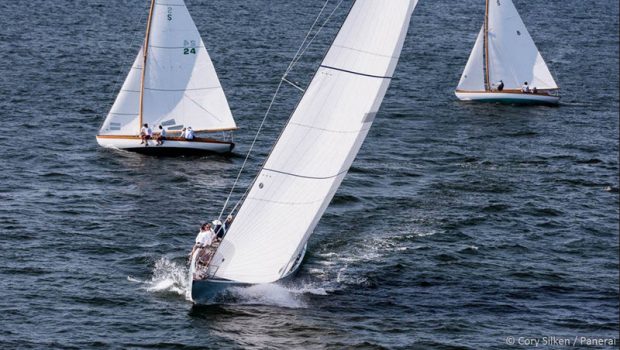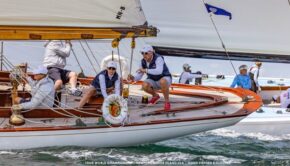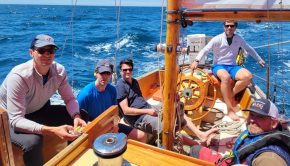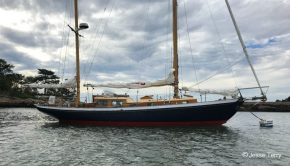Fairly Rating the Classic Yachts
Published on November 6th, 2017
The Technical Committee of the Classic Yacht Owner’s Association was tasked with creating the latest Classic Rating Formula, known as CRF MkII, to smooth out the bumps from its predecessor. With the first season now complete, progress appears to have been achieved. Kate Wilson reports.
“The formula behaved as it was expected to,” says Robert W. Stephens, one of three yacht designers on the Technical Committee. Along with fellow naval architects, Jim Taylor and Greg Stewart, Stephens admits: “We know there were inconsistencies, but the margin was much smaller than the old formula. Now we are looking to take steps over the next year to smooth out those disparities by working closely with regatta organizers.”
Last winter, the experienced yacht designer sub-group examined all the technical aspects of what makes a boat fast and how to weight those factors to make races fair. They knew the old rule compared similar boats to each other and favored larger Classics over smaller ones. The Committee looked to remove that bias by adding a few more steps to smooth out the transition between short-wide designs versus long-skinny boats. The ultimate goal was to take care of the known flaws to produce a rule that represented the speed of the yacht.
Stephens attributes Taylor with doing much of the heavy lifting when it came to devising the formula to accommodate more variables. He took the newly designed rule and then tested it against previous results to see how boats’ results compared the new and old formulas. Essentially, he conducted virtual races for hundreds of boats over many years.
After the first major event with CRF MkII, the NYYC Annual Regatta back in June, there was a sigh of relief among the Committee as the formula performed as it was supposed to. “We were pretty pleased overall,” says Stephens. “Now we had a benchmark of where we can improve. The first obvious area for improvement is to work closer with Race Organizers when it comes to selecting courses and classes so that races match the rules’ assumptions.”
What Stephens means, is when the courses were balanced between upwind, downwind, and reaching legs, then the rule works better as the formula takes the intended speeds of different points of sail into consideration. If courses favor one direction, the CRF MkII does not work as anticipated.
The Technical Committee is aware that no formula can be perfect and work for all boats. They know the new system favors long-narrow yachts like meter-boats compared to Spirit of Tradition yachts. However, to mitigate this problem, the Technical Committee recommends Race Organizers group similar Classics into classes, because when sailed altogether, the rule tends not to function as intended.
To get feedback on the new rollout, the Technical Committee has been talking to, and more importantly, listening to the competitors. Stephens went to Nantucket to represent the Committee during the Opera House Cup. “It was very informative to be there and get their perspectives. Most folks have been thankful and supportive. I got the sense that the new transparency brought to the rule is very appreciated.
“What I love about classic yacht racing is not only the diversity of the boats but also the variety of the owners,” concludes Stephens. “Many of our owners love their classics and just want the joy of racing with other classics. We want to be able to keep everyone happy, and we don’t want to get to in the weeds with the rule, but it is part of the fun to keep it fair for everyone.”









 We’ll keep your information safe.
We’ll keep your information safe.